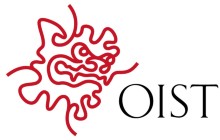
After spending more than 10 years at the helm of Germany’s Max Planck Society, Peter Gruss became president and CEO of the Okinawa Institute of Science and Technology Graduate University (OIST) in January 2017. He is a molecular biologist recognized for his work in gene regulation and embryonic development, including pioneering experiments that led to the discovery of enhancers — elements in cells that amplify the activation of genes. While at the Max Planck Society, Gruss added about 200 directors of research and introduced initiatives to extend the scope of the institution’s academic pursuits. He is now tasked with nearly doubling the number of faculty and students at OIST by 2023. A founder of a biopharmaceutical company with wide experience in technology transfer and innovation, Gruss also plans to leverage his expertise to facilitate outreach to industry.
What stage of development is OIST at now?
We started out as a visionary initiative by the Japanese government to internationalize the nation’s research. Luckily, Japan hasn’t wavered in its commitment to this plan — stable funding from a single government source has contributed greatly to our growth. Since 2005, the Cabinet Office has given us roughly ¥220 billion (about US$2 billion). Thanks to that, we’re now in a phase in which exponential growth is occurring based on the foundations we’ve laid in the past few years. In my experience, it’s unique for such an ambitious endeavour to unfold as planned. World-class institutions all look to hire the best and brightest — they all aspire to produce scientific breakthroughs that extend the limits of human knowledge. But most universities have little core funding, which makes it challenging to remain the best of the best. This is where OIST has a strong competitive advantage.
What is the secret behind OIST’s rapid growth?
From the very beginning, our research philosophy has been to prioritize quality over quantity when hiring faculty. We also provide high funding and freedom, even at the junior level. This approach seems to be working its magic. Before the graduate university was established, we were a promotion corporation with four initial research projects, primarily in neuroscience. Shortly after inception, we began hiring in other areas of life sciences, then in physics and chemistry, and later in computer science and mathematics. Fast forward to today, and we’re producing some of the best research results in Japan. According to an analysis in Nature Index, in 2017, OIST produced the highest quality research relative to total output among Japan’s academic institutions when the playing field is leveled by institution size.
What are some of the most notable recent developments?
We’re very proud to have our first cohort of OIST students graduate earlier this year. A major upcoming goal is to increase the number of faculty from 60 to 100 by 2023 and to 200 by 2031. To accommodate this expansion, we’re currently building our fourth laboratory building and are planning a fifth one. We also plan to solidify our strength in mathematics and computer science.
Okinawa is a unique place in Japan, both in terms of location and culture. What is the significance of having such an ambitious research institute in Okinawa?
Island sustainability and environment are important areas that we collaborate with locals on. For example, we’re involved in a project that uses new technologies to treat wastewater from Awamori distilleries and pig farms, which produce two of the most iconic staples of Okinawa. The prefectural government has been particularly generous in their support in applying this project, which also generates electricity in the process. We exert a tremendous influence on the local economy through technology transfer, employment opportunities and our impact on education.
What does this mean for Japan’s future?
Bringing international talent, including younger scientists, into Japan is vital if this country is to continue being one of the most competitive economies in the world. At OIST, we communicate in English — the universal scientific language. Being truly international helps attract academics from around the world to this campus. Ultimately, our goal is for OIST to educate and train graduates who spread this global outlook to Japanese science and beyond. I think we are making such an impact already. In fact, in some cases, OIST has now become the first port of call for Japanese postdocs and academics returning to Japan for faculty positions, because of its stable funding and facilities. In that regard, internationalizing research is also crucial for reversing the brain drain.


